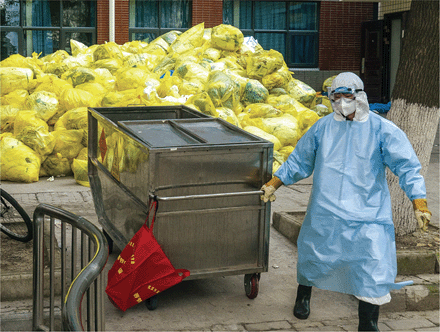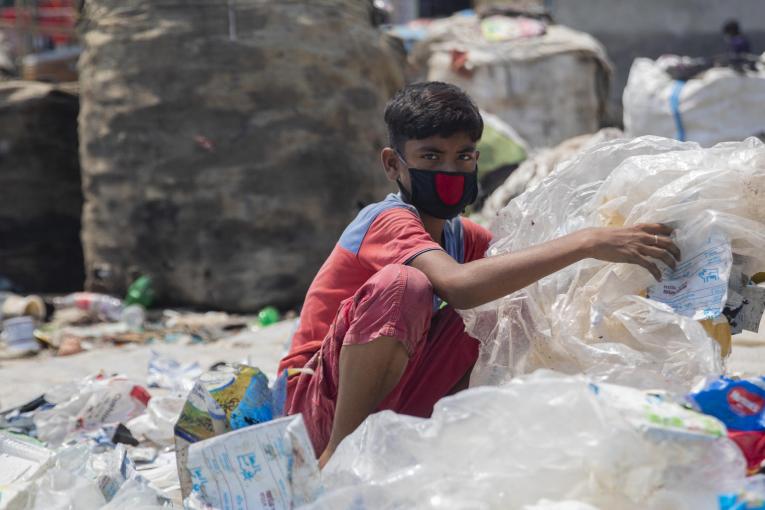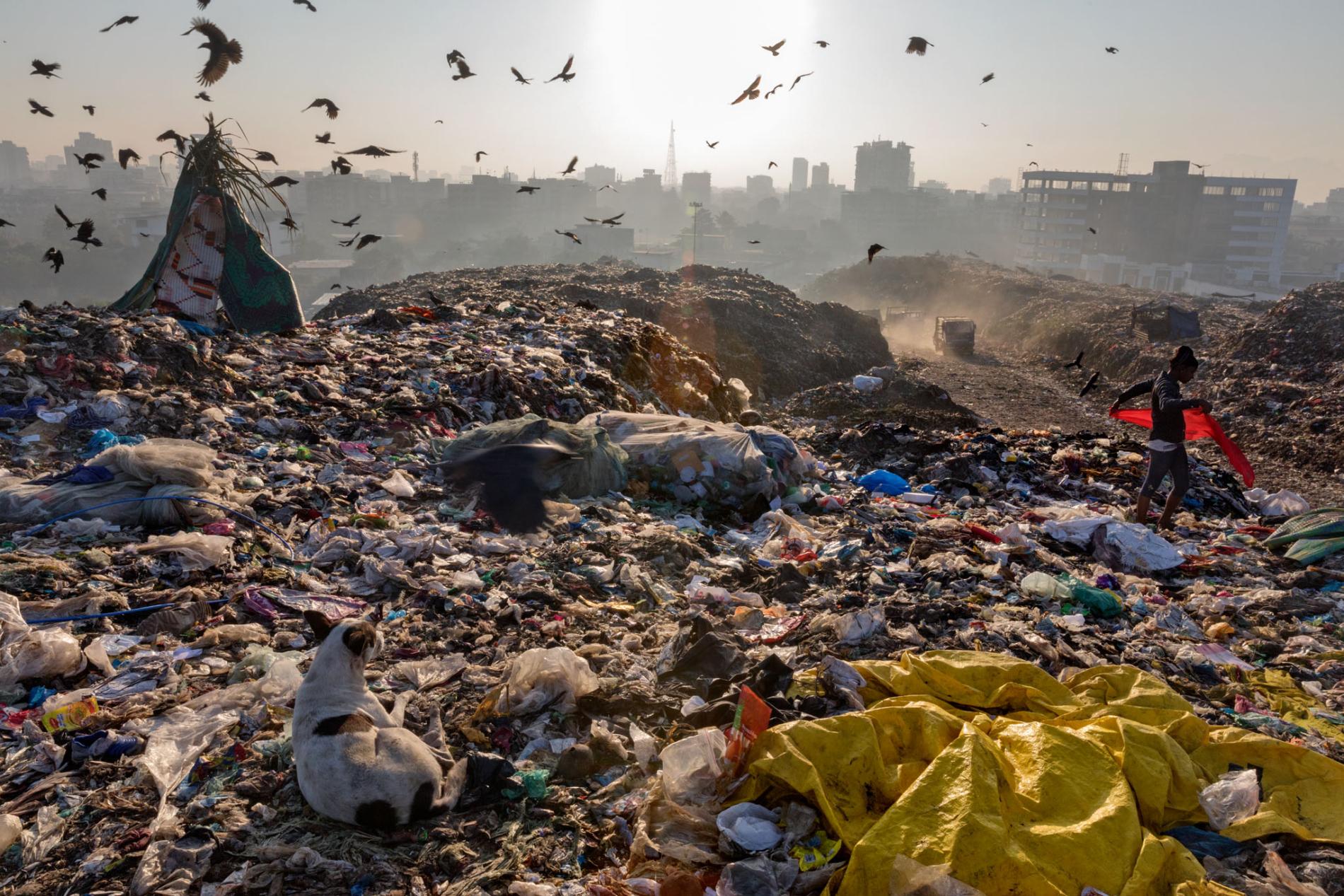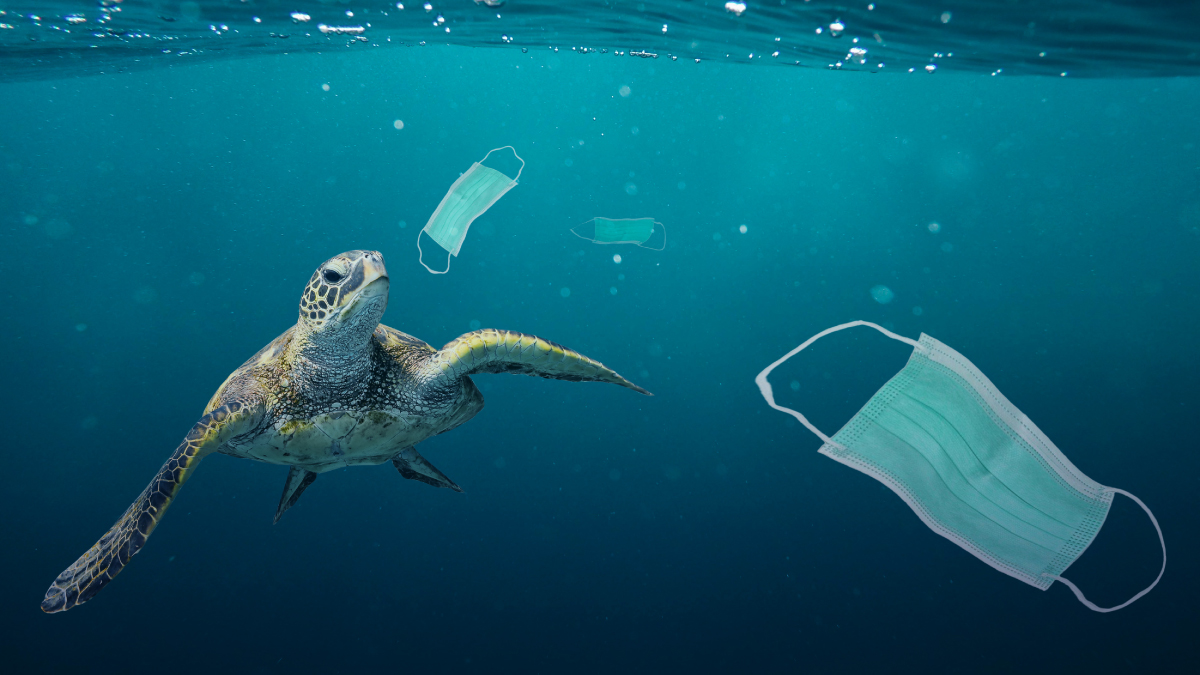Over the last few years, the world has confronted its large and growing plastic pollution crisis. However, the coronavirus pandemic halted progress in tackling the problem. Changing consumer habits, a rollback of laws barring single-use plastics, and other changes threaten the healing the world has attempted so far, writes SIDDHARTH GANGULY.
——–
PLASTIC pollution has been firmly established as one of the greatest dangers to the environment today, and for a good reason. The disposal systems meant to tackle plastic waste are inadequate, which is why vast quantities of it are winding up in the oceans.
Plastic wreaks havoc on marine life and leeches toxic chemicals into their bloodstream. These chemicals eventually enter human food supplies. Even on the earth, plastic causes a host of civic problems such as blocking drains, creating pools of stagnant water which are fertile breeding grounds for vector-borne diseases.
Even the plastic which ends up in “proper” disposal channels causes problems. Plastic recycling systems are inefficient, and therefore the process is economically unviable. Waste is often redirected to incinerators instead, which contributes significantly to air pollution because of the use of low-quality machinery.
Or plastic ends up in landfills, which, in India and many other parts of the world, are unsanitary and cause chemicals to leach into the soil and water.
According to the United Nations Environment Programme (UNEP), plastic litter costs tourism, shipping, and fishing industries in the Asia-pacific region alone $1.3 billion a year. It also causes an estimated $13 billion worth of damage to the global marine ecosystem annually. The most disturbing metric of all is that only 9% of all the plastic ever produced has ever been recycled.
PROGRESS SO FAR
Thankfully, these facts and concerns are well-established, and so action is being taken to tackle plastic pollution. In 2017, the UNEP declared war on ocean plastics and laid out a roadmap for sustainability which suggests a ban on single-use plastics.
It also urged governments to incentivise producers and consumers to change their habits and to invest in research and development for more effective plastic waste disposal systems. It was inspiring how the international community, including India, began to heed this advice.
According to the UNEP, plastic is one of the biggest environmental scourges that requires governments to regulate, businesses to innovate, and individuals to act.
On June 5, 2018, World Environment Day, then environment minister Dr. Harsh Vardhan announced a plan to phase out single-use plastics by 2020. This deadline was pushed to 2022 by Prime Minister Narendra Modi in October 2019. Yet, even before the PM’s address, state governments had already responded to this call to action.
In September of 2018, the Odisha government banned polythene bags, plastic water bottles of less than 200 ml capacity, disposable plastic utensils, and the like. States such as Maharashtra, Telangana, Assam, Tamil Nadu, Goa, also banned single-use plastics, especially polyethylene carry bags, over the following months.
This was in line with UNEP’s plea that tackling “one of the biggest environmental scourges of our time will require governments to regulate, businesses to innovate, and individuals to act.” India, although early in this journey, was also on the path to sustainability and plastic waste management.
Then came the COVID-19 pandemic, threatening to wipe out all the progress so far.
PLASTIC WASTE GENERATION AND COVID-19
The coronavirus pandemic has made reducing the risk of viral transmission the number one priority. States relaxed rules against plastic bag usage and supply-chains fell back on the inexpensive and supposedly hygienic material. Plastic waste generation surged.
In Bengaluru, single-use plastics have been banned since March 2016, which fixed a penalty on producers, distributors, and users of these plastic items. However, as reported by Mint in July, Bruhat Bengaluru Mahanagara Palike (BBMP) commissioner Anil Kumar made a statement allowing their use in light of the pandemic conditions.
Similarly in Delhi, which had been moving towards enforcing a plastic ban, and in Kerala, where plastics under 50 microns have been banned since January 2020, rules were relaxed as the pandemic was prioritised. In Kerala, this was mainly done to aid relief efforts at community kitchens.
The environment had healed somewhat in terms of plastic pollution, but this looked ready to be undone. This change was seemingly prompted by necessity, but to what extent is the question.
Vanapalli Kumar Raja, a research scholar at the School of Environmental Science and Engineering, IIT Kharagpur. Raja and his colleagues have published a research paper that explains how plastic waste generation increased during the pandemic.


Fears of contracting the virus led to a surge in demand for single-use personal protective equipment (PPEs), largely produced from plastic. While the safety of the public cannot be compromised, alternatives do exist.
Raja told The Leaflet: “Instead (of using single-use, disposable masks and PPEs), use of masks that can be used multiple times before disposal can be encouraged to reduce the generation of waste in the first place.” He stressed that curbing plastic waste generation at the source is the best way to tackle the problem.
Another factor that led to increased plastic waste generation was the decision of various state governments to relax laws surrounding the use of plastic carry bags. This move, according to Raja, was done despite there being no conclusive evidence suggesting plastic bags provide a reduced risk of viral transmission. Moreover, Raja said, “Such a stance taken by governments may integrate people’s belief of plastic as hygienic.”
This misconception can be detrimental to people’s attitudes towards plastic in the future and is largely unfounded. A paper cited by Raja and his colleagues in their research highlights that, while the Sars CoV-2 virus was found to be able to survive on plastic for three days, it could only survive on paper for three hours, on cardboard for one day, and cloth for two days.
Finally, the imposition of the lockdown brought about a change in consumer behaviour. People increasingly began to use home delivery and e-commerce platforms, according to the World Trade Organisation (WTO), which are plastic-intensive in their packaging.
As for food delivery services, the provision of plastic utensils adds to the problem… All of these factors contributed to a significant increase in generating plastic waste, an increase which, in many ways, was avoidable.
OVERSIGHTS IN LEGISLATION
The pandemic has not only added to plastic waste generation and damaged individuals’ consciousness surrounding single-use plastics, it has also exposed existing gaps in legislation regarding plastics.
Currently, the flagship regulations in the country which deal with this problem are the Plastic Waste Management (PWM) Rules, 2016. When these regulations were announced, then Union Environment Minister, Prakash Javedkar, laid out the aim of reducing daily plastic waste generation by 6,000 tons. How this was to be achieved was, however, left quite vague.
Unlike rules laid out by state governments, such as those of the Odisha government mentioned above, the PWM rules are far less detailed regarding the definitions of Single-Use Plastics (SUPs). While state governments have concrete definitions for SUPs in terms of bottles, bags, utensils and so on, the union rules only define SUP bags as those less than 50 microns in thickness. No specifics are laid out for other plastic products.


The PWM rules also introduced the concept of Extended Producer’s Responsibility (EPR) for specific participants in the plastic supply chain. EPR under the PWM rules directs brands and producers of plastics to collect the plastic waste generated through their own distribution channels. This move, however, overlooks the role of the informal sector in plastic waste collection efforts. According to a report by DownToEarth, 1.5 lakh people from the informal sector in Delhi alone are employed in collecting plastic waste.
What’s more, the EPR norms laid out in the PWM rules differ from those laid out in the Solid Waste Management (SWM) rules. Here, to fulfil their EPR, manufacturers and brands are required to provide financial assistance to local authorities for setting up waste management systems.
The rules and regulations currently in place to deal with plastic waste generation are rather disconnected and vague. To provide some clarity on the procedures to be undertaken as well as to increase accountability and adherence, changes need to be made.
THE IMPACT OF THE PLASTIC LOBBY
Despite its shortcomings, the 2016 legislations were welcomed as a move towards increasing the accountability of brands in curbing their plastic use. However, amendments made to this law in 2019 worked to blunt its force.
A key clause in this regard was 9(3) which stated that “Manufacture and use of non- recyclable multi-layered plastic (MLP) if any should be phased out in two years’ time.” The Plastic Waste Management (Amendment) Rules, 2018 modified this clause, replacing “non-recyclable multi-layered plastics” with “multi-layered plastic which is non-recyclable or non-energy recoverable or with no alternate use.”
A report by The Logical Indian highlights how this change came from intense lobbying from the All India Plastic Manufacturers Association (AIPMA), Pet Packaging Association for Clean Environment (PACE) and other such bodies in the plastic industry. Since virtually no MLPs are non-recyclable or non-energy recoverable, the committee responsible (one formed under the Ministry of Environment in 2017) decided to roll back the ban. Instead, it suggested MLP use be regulated and its use in waste-to-energy plants be promoted.
PRESSURE ON WASTE MANAGEMENT
The growing plastic waste puts pressure on India’s already taxed waste management system. The hike in hazardous waste generation, in the form of discarded PPE kits, left the waste management systems overburdened. Yet, this is not the end of the problems brought on by COVID-19.
There is also a shortage of waste collection and handling staff. Moreover, COVID-19 has brought on a drastic reduction in oil prices, which means a consequent reduction in the prices of virgin plastic. This has made the production of recycled plastic less economically viable.
Awareness and individual action will always be the primary source of change. Our habit of throwing organic waste in closed plastic containers and polyethene covers reduce their recyclability value tremendously.
The recycling sector is already plagued with high economic costs and low financial incentives. This, says Raja, is the reason why many commonly used waste plastics end up in streams and dumps. With added pressure from the pandemic, recycling is only becoming less viable.
This means that plastic needs to be disposed of using alternative methods such as landfilling or incineration. “In India, landfilling is preferred because it is the easiest option,” Raja says, “however, we should be careful while using the term landfill because an engineered, sanitary landfill is a rare occurrence in India. In most of the country, unsanitary waste dumping is practiced. This is a waste of valuable resources, which can be reprocessed to useful products or energy otherwise.”
Raja explains that even incineration encourages waste production rather than waste reduction. Moreover, incinerating plastic waste releases toxic gases. “With proper regulations, waste incineration can be beneficial for India, because the technique does not demand prior segregation or prescribed quality of the waste,” he says.
A truly clean form of incineration would require heavy infrastructure investment, yet, incineration is where most of the waste generated is going. This overwhelms capacity and causes waste to spill out of landfills and spread toxic materials far beyond.


PANDEMIC SHIFTED ATTENTION FROM POLLUTION
The pandemic has shifted attention away from the problem of plastic pollution more than it needed to. Plastic waste generation shot up as single-use plastic burgeoned and the facilities to manage this waste were spread too thin. This has set the country back in terms of its plastic goals.
It is most evident that India is vulnerable to a fall-back on plastic use, for it is an inexpensive and reliable material. However, we do not have the infrastructure to properly dispose of the plastic waste we generate. This needs to change, and alternatives need to be developed to avoid waste and toxic pile-up. Two potential solutions are the use of “bioplastics” and implementing “feedstock recycling”.
RIGHT IDEA BUT HEAVY INVESTMENT REQUIRED
“Bioplastics,” Raja details, “are made from natural materials so that they degrade faster in the environment or at least their degradation is speeded with the use of additives.”
The degree to which such materials are biodegradable depends on their base design and the raw materials used to manufacture them.
While these may sound like an ideal alternative, Raja warns not to look at them as a ‘silver bullet’ solution to the current problems. “Some of the bioplastics, such as Polylactic acid (PLA), require an industrial scale composter to be biodegradable. So, while promoting the use of bioplastics, the development of necessary infrastructure should also be kept in mind for effective bioplastic waste management.”
Feedstock recycling, on the other hand, is an alternative method for waste disposal which could make recycling more appealing by making it financially more viable. “Plastic waste is heated [in feedstock recycling] in the absence of oxygen to recover [by]products such as liquid oil, gas and solid char, which have good economic prospects,” Raja notes.
The zero-waste nature of this method makes it attractive for recyclers; the liquid oil generated is of roughly the same quality as crude oil, according to Raja. In a recent study, he and his colleagues highlight the application of char to boost soil fertility. However, once again, there is a need for investment to make the process more efficient and economically viable.
The reuse, repair, refurbishment, remanufacturing and recycling of goods creates a closed loop. It can minimise the use of resource inputs and the creation of waste.
These solutions require action at the policy level. Encouraging investment in these processes, to reduce reliance on plastics and effectively recycle materials and move towards a “circular economy”. Although people can make sure these changes are implemented by holding officials accountable to them, their role is limited. However, there are things individuals can do to help.
INDIVIDUAL ACTION
“The primary and the most basic step we can take is to reduce our consumption of plastics,” Raja says. “Instead, we can shift to reusable alternatives. It might take a little effort at first, but eventually, our consumption patterns will shift from conscious action to unconscious habit,” he says.
Awareness and individual action will always be the primary source of change in scenarios such as this.
Raja also stresses the importance of educating ourselves and those around us, to key in the gravity of the problem. This advice has been heeded by ‘Tide Turners’, an NGO affiliated with the UNEP and the Center for Environment Education (CEE). A global youth movement, Tide Turners inculcates awareness about plastic pollution in its members from an early age. Through its “Plastic Challenge” initiative, it rewards community-level actions and encourages the youth to play an important role in changing behaviours they see around them.
SEGREGATE AT SOURCE
“Source segregation of waste helps increase the recyclability of the plastic waste,” Raja explains. “It is also better if we could avoid mixing organic waste with recyclable plastics. Our habit of throwing organic waste in closed plastic containers and polyethene covers reduce their recyclability value tremendously.”


While housing societies have implemented norms for waste segregation, many residents blindly follow these rules without thinking them through. Being able to efficiently recycle materials is key to shifting our waste disposal methods towards recycling, which is a crucial step to becoming a circular economy.
WHAT IS A CIRCULAR ECONOMY?
Raja delineates “circular” from “linear” economies, saying, “In the traditional linear economy, raw natural resources are taken, [and] transformed into products, which then get disposed of after their life cycle. A circular economy aims to eliminate waste and promote the continued use of resources. By reuse, repair, refurbishment, remanufacturing and recycling, a closed-loop is created, minimising the use of resource inputs and creation of waste.”
While this requires change at the level of manufacturers and corporations, even individuals can take steps to view resources differently. They must aim to recycle and reuse products rather than regard them as waste once their obvious use is fulfilled.
Examples are there across the globe, with products such as batteries, packaging, even shoes, and clothing now being made from recycled materials. These changes can drastically reduce our waste generation and demand for resources.
Individual and institutional efforts are required to tackle plastic pollution, but what is most important is that change is a long-term commitment. The COVID-19 pandemic has revealed the vulnerabilities of our supply chains in a time of crisis. Plastics are the de facto fall-back materials for all our systems; they are inexpensive, reliable, and have been linked with hygiene in the minds of people. It would take work to break these links, but break they must, to reduce our day-to-day reliance on plastics.
Citizens must take individual responsibility, be mindful of the usual wasteful behaviours and educate those around them in sustainable practices. Finally, they must move institutions into action and hold them responsible to build capacity for large-scale changes that can put the country firmly on course to sustainability.
(Siddharth Ganguly is a journalism student at the Symbiosis Institute of Media and Communication, Pune and an intern at The Leaflet. The views are personal.)


